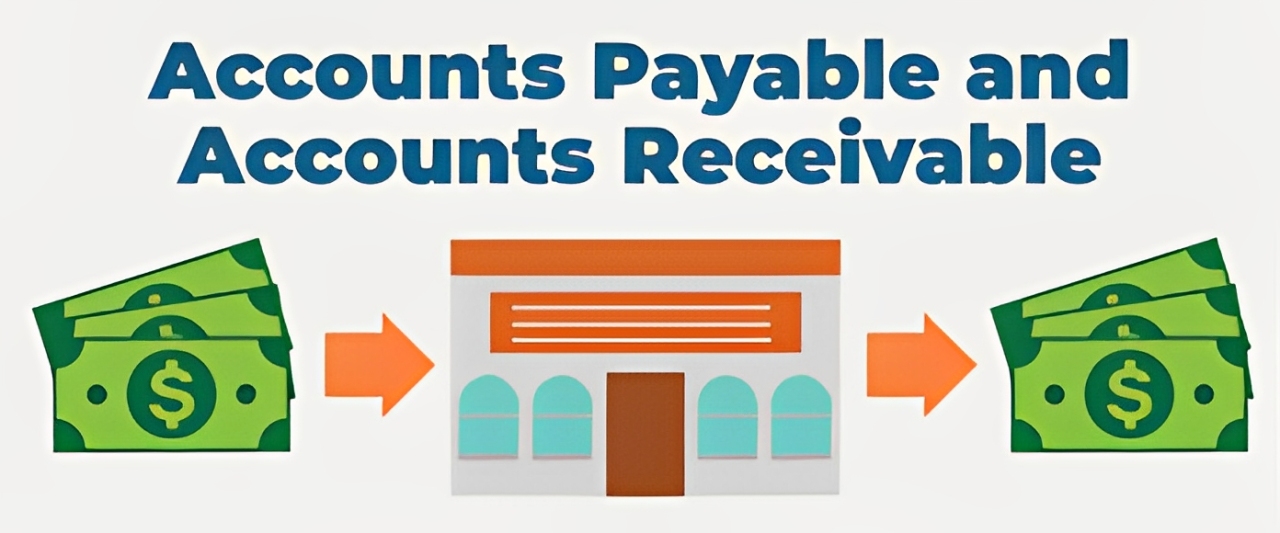In the realm of business finance, accounts payable (AP) and accounts receivable (AR) are fundamental concepts that play a pivotal role in maintaining a company’s financial health. A comprehensive understanding of these terms, coupled with practical examples, can provide valuable insights into effective financial management.
Defining Accounts Payable and Accounts Receivable
Accounts Payable represents the short-term liabilities a company owes to its suppliers or vendors for goods or services received on credit. These are obligations that the company needs to settle within a specified period to avoid default. For instance, if a business purchases raw materials from a supplier with an agreement to pay after 30 days, this amount is recorded as accounts payable until the payment is made.
Accounts Receivable, on the other hand, denotes the money owed to a company by its customers for products or services delivered but not yet paid for. This is considered a current asset, as it is expected to be converted into cash within a short period. For example, when a company provides services to a client and issues an invoice payable within 60 days, the outstanding amount is recorded as accounts receivable until it is collected.
The Interplay Between Accounts Payable and Accounts Receivable
The efficient management of both AP and AR is crucial for sustaining a company’s liquidity and operational stability. While accounts payable management ensures that a company meets its obligations to suppliers and maintains good credit standing, effective accounts receivable management ensures timely collection of funds, which is vital for cash flow.
Real-World Examples of Accounts Payable and Receivable
To illustrate these concepts further, let’s explore five real-world scenarios:
1. Manufacturing Industry
Accounts Payable Example: A car manufacturer purchases steel and other components from various suppliers to produce vehicles. The suppliers deliver the materials with payment terms of net 60 days. The amounts owed to these suppliers are recorded as accounts payable on the manufacturer’s balance sheet until the invoices are paid.
Accounts Receivable Example: The same car manufacturer sells a fleet of vehicles to a dealership network. The dealerships receive the vehicles with an agreement to pay within 90 days. The amounts owed by the dealerships are recorded as accounts receivable on the manufacturer’s balance sheet until payment is received.
2. Retail Sector
Accounts Payable Example: A clothing retailer orders apparel from a fashion designer for the upcoming season. The designer delivers the clothing with an invoice payable in 45 days. The retailer records this liability as accounts payable until the payment is made.
Accounts Receivable Example: The retailer also offers a store credit card to its customers, allowing them to purchase items on credit. The outstanding balances that customers owe to the retailer are recorded as accounts receivable until the customers pay their credit card bills.
3. Service Industry
Accounts Payable Example: A marketing agency hires freelance graphic designers to work on a client’s project. The freelancers submit their work along with invoices payable in 30 days. The agency records these amounts as accounts payable until the invoices are settled.
Accounts Receivable Example: The same agency completes a marketing campaign for a client and issues an invoice with payment terms of net 60 days. The amount the client owes is recorded as accounts receivable until the payment is collected.
4. Healthcare Sector
Accounts Payable Example: A hospital purchases medical supplies from a distributor with payment terms of 90 days. The hospital records the amount owed as accounts payable until it settles the invoice.
Accounts Receivable Example: The hospital provides treatment to patients and bills their insurance companies. The amounts due from the insurers are recorded as accounts receivable until the payments are received.
5. Technology Industry
Accounts Payable Example: A software development firm subscribes to various online tools and platforms to aid in development. The subscriptions are billed monthly, and the firm records these as accounts payable until the payments are made.
Accounts Receivable Example: The firm develops custom software for a client and delivers the final product along with an invoice payable in 60 days. The amount owed by the client is recorded as accounts receivable until it is paid.
Best Practices for Managing Accounts Payable and Receivable
Effective management of AP and AR is essential for maintaining a healthy cash flow and ensuring the financial stability of a business. Here are some best practices:
For Accounts Payable:
-
Timely Payments: Ensure that all invoices are paid within the agreed-upon terms to maintain good relationships with suppliers and avoid late fees.
-
Accurate Record-Keeping: Maintain detailed records of all payables to monitor outstanding obligations and manage cash flow effectively.
-
Leverage Payment Terms: Take advantage of any early payment discounts offered by suppliers when possible, but also utilize the full payment period to optimize cash flow.
For Accounts Receivable:
-
Prompt Invoicing: Issue invoices immediately upon delivery of goods or services to expedite the payment process.
-
Regular Follow-Ups: Implement a systematic approach to follow up on overdue accounts to reduce the risk of bad debts.
-
Credit Assessments: Conduct thorough credit checks on new customers to assess their creditworthiness before extending credit terms.
Conclusion
A thorough understanding and effective management of accounts payable and accounts receivable are vital for the financial health of any business. By implementing best practices and learning from real-world examples, companies can optimize their cash flow, maintain strong relationships with suppliers and customers, and ensure long-term operational success.

